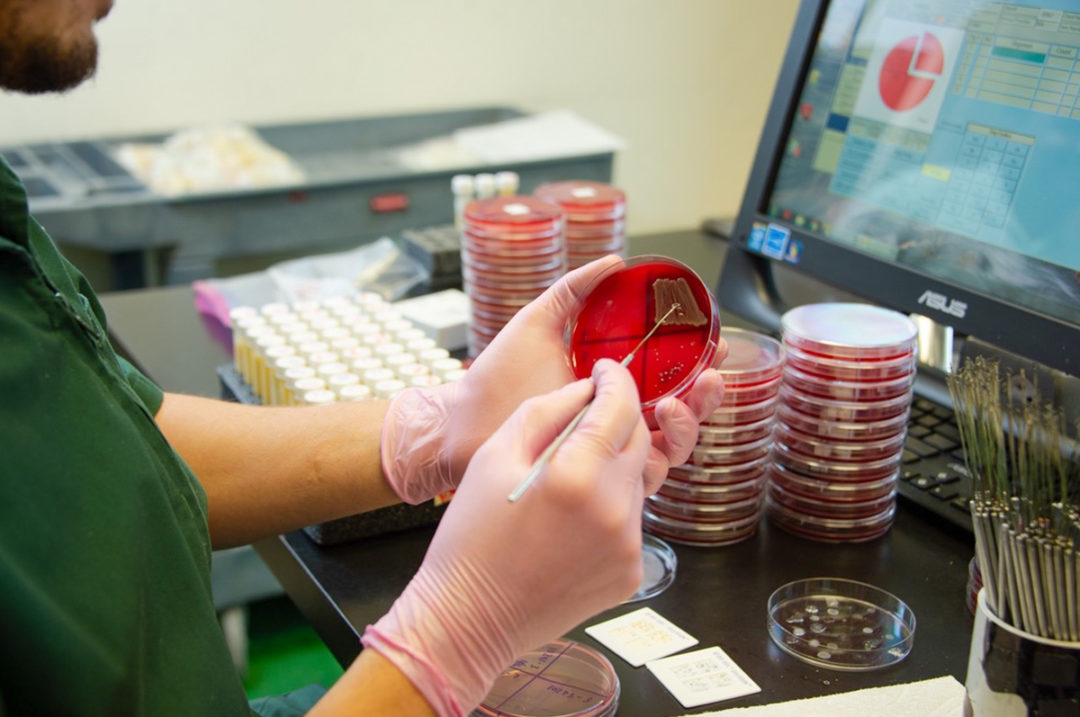There is no doubt that the use of routine cultures for mastitis pathogens, both contagious and environmental, is a powerful management tool for maintaining good udder health and milk quality in progressive dairy herds. It puts information into the hands of the manager and allows data-driven decisions to be made regarding antibiotic treatment, contagious mastitis and culling.
Historically, mastitis cultures were done by the herd veterinarian in an offsite lab or veterinary clinic. That has changed significantly in the past 10 to 15 years, with a surge in popularity and availability of on-farm culturing options. On-farm culture can be an excellent opportunity to empower herd managers, but it also needs to be recognized as a dedicated project that needs to be administered carefully. Before jumping into purchasing equipment and beginning the process of an on-farm lab, the pros and cons should be weighed carefully and the question asked, is an on-farm lab right for your dairy?
Questions to ask
A good place to start when making this decision is to identify your priorities for what on-farm culturing would accomplish. In my experience, the appeal for having on-farm culturing is frequently driven by wanting to ease logistics and decrease costs. These are not unreasonable goals, but what should also be taken into consideration are the desired testing capabilities of the lab and the cost of misinformation if the process is not being properly managed. It is helpful to break down these objectives into categories and run through a few key questions:
- What is the primary goal for on-farm culturing?
- Is there a target organism or group of organisms?
- Who will be responsible for oversight of the culture process?
- How will quality and accuracy be periodically audited?
- Can these objectives be met on-farm or is a professional lab required to assist?
Test it out
An ideal place to begin test-driving the process of on-farm culturing is to implement the routine use of a bi- or tri-plate system for making antibiotic treatment decisions on individual mastitis quarters. This will offer simple differentiation between gram-positive organisms, which are good candidates for antibiotic therapy, and gram-negative organisms, which are not. The tri-plate takes it one step further by differentiating between staphylococci and streptococci, which are both gram-positive. While this system is simple and designed for easy on-farm implementation, it will test the execution of maintaining a consistent routine, good sampling technique, plating skills, basic interpretation of bacterial growth and recording of results. Any farm that has no prior experience with on-farm culturing should strongly consider implementing a treatment decision system as a starting point before exploring more advanced culture options. If a treatment decision system proves to be a challenge for your staff, then the further scope of testing is probably not the best choice for you. If a treatment decision system has already been mastered on the farm, then a more advanced dairy laboratory may be considered.
The logistics
It is common for large dairies to be located in rural and remote areas, where local options for mastitis labs do not exist, and even shipping logistics are a challenge due to limited or no services close by. These farms may choose to invest in more sophisticated equipment, dedicated employees and more advanced training for those employees in order to increase the scope of testing that they can perform on the dairy. A logical next step for the expansion of testing ability is to include the contagious mastitis pathogens Staphylococcus aureus, Streptococcus agalactiae and mycoplasma.
While there are many other pathogens of concern, these three organisms alone remain capable of devastating outbreaks due to how aggressively and quickly they can spread from cow to cow. These bacteria are all culturable. However, low or intermittent shedding of live bacteria, low specificity (increased risk of false positives) and special growing condition requirements present challenges for the lab process. Protocols will require the use of secondary biochemical tests to increase accuracy and level of detection.
Many false positive organisms exist that mimic S. agalactiae and mycoplasma growth in cow samples, which can lead to healthy, uninfected animals being inadvertently removed from the herd due to misidentification. In order to avoid this, diagnostic methods such as polymerase chain reaction (PCR) or mass spectrometry (Maldi-ToF) are needed to confirm or rule out those positive suspects. These diagnostic methods are not appropriate for an on-farm setting, and the farm needs to be prepared to send these suspect cultures out for confirmation to a designated milk-quality laboratory.
The clear advantages of building an advanced on-farm laboratory will be significantly faster turnaround times compared to shipping samples out to an external lab and, ultimately, lower long-term costs. However, these benefits carry a risk, as identified previously. Regardless of the sophistication of the lab, the biggest barriers to success will be training, skilled labor and overall quality management. A good rule of thumb to keep in mind if considering building an advanced lab on your farm is that it’s essentially a business of its own underneath the same roof. It will need to be managed as such.
The key reason for on-farm testing or any mastitis culture testing at all is to identify the causative organism(s) and create a solution based on that information. It is important to remember, however, that bad information can be worse than no information. The risks of sending uninfected cows down the road or having an unexpected contagious mastitis outbreak are both potential outcomes of diagnostic mistakes in an on-farm lab situation. I strongly encourage dairies implementing on-farm culturing to engage in some sort of external testing as an “audit” of their efficacy. This can often be accomplished with monthly, comprehensive bulk tank cultures done in a specialized milk-quality lab. A good bulk tank culture protocol will use a panel of assorted selective agars in order to target specific bacteria and provide the best broad spectrum picture of overall udder health possible from a single tank sample. It should also line up with what is being seen in the cow samples. For example, if a bulk tank is positive for mycoplasma but none is being detected in the cows, that indicates a disconnect in the monitoring system. This gap in detection may be a result of which cows are getting sampled, or a possible reading error in the lab or both. Regardless of the reason, the consequences of this type of missed detection can be extremely damaging.
Ignorance is not bliss
At the end of the day, the adage of “you don’t know what you don’t know” is a good one to keep in mind. Assume that the process of running on-farm culturing might be more difficult than anticipated. Work with a veterinarian or other trusted adviser who has specific education and laboratory experience in mastitis cultures and ask lots of questions. When designed and managed appropriately, on-farm culturing can be a great tool in helping a dairy be successful in achieving excellent milk quality, but like all tools, it requires maintenance. Take into consideration all aspects of the process to make the decision if it’s the right tool for you.











